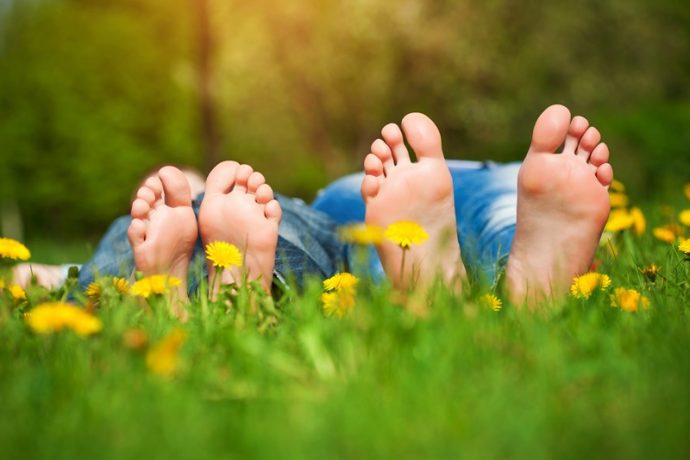Many consumers aren’t aware of the connection between inadequate foot care and knee and back pain. Foot pain also can be the first sign of more serious problems, such as diabetes or arthritis. The average person generally takes 8,000 to 10,000 steps each day. At this rate, problems are likely if proper care isn’t given to the feet.
The feet are among the most neglected parts of the human body. It is estimated that three out of four people will experience severe foot ailments at some point in their lives. The majority of these ailments are preventable with comfortable shoes.
The human foot is a natural work of art. One quarter of the bones in the human body are found in the feet. When these bones are out of alignment because of ill-fitting shoes, the results can impact the entire body. Diabetes and poor circulation are other factors that contribute to foot ailments.
Women bear the pain of many foot disorders, due in large part to wearing high heels. Women are estimated to have four times more damage to their feet than do men. Bunions are commonly caused by ill-fitting shoes or high-heeled shoes. Tight shoes worn by men or women can cause corns, claw toes, mallet toes, metatarsalgia, ingrown toenails, overlapping toes, shin splints and a host of other disorders and ailments.
The good news is that nearly all of these conditions are treatable and preventable by simply wearing wide-fitting shoes. Your foot care routine should include a variety of helpful practices. Always go with the widest fit when you are looking for good, quality shoes. Every person has one foot that is slightly larger than the other. It is recommended to always go with the shoe that best fits the larger foot.
It is also recommended that you measure your feet prior to purchasing shoes. It is best to buy shoes and measure your feet at the end of the day when the feet are at their maximum size. It is also recommended that you never purchase shoes based solely on size. Always try them on before you buy them to ensure you are buying comfortable shoes. Walk around the aisle to be sure that they are comfortable.
The best choice is a shoe that is shaped like your foot. There should be adequate toe room and good arch support. Consumers should never assume the shoe will just stretch in time and fit their feet. Shoes should fit correctly and not slide up and down or across the heel while you’re walking.
Diabetics are predisposed to having foot problems. Reduced circulation throughout the limbs can lead to numerous ailments. Neuropathy is a condition that causes tingling or a lack of sensation in the limbs. This reduced sensation can affect proper hygiene, which can then lead to a host of other problems.
Proper hygiene for diabetics should include a daily regimen of cleaning and inspecting the soles of the feet. Any cuts, scratches or scrapes should be cleaned and treated immediately. A warm soak in a foot bath is an excellent way to relax, but diabetic patients should never use hot water because of the decreased sensation of the feet. Diabetic patients should also have their physician examine their feet at every visit. Patients are encouraged to have regular visits with a podiatrist as well as with their primary physician.
Individuals with diabetes should always observe the best foot care. This means purchasing shoes specifically for diabetics. A daily routine should also include specially designed socks and insoles when necessary.






